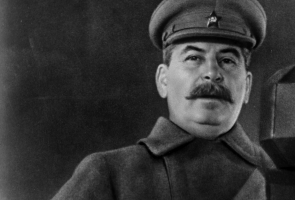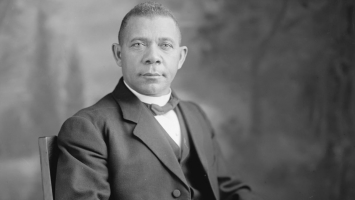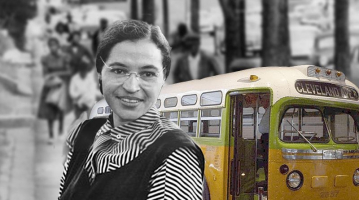Top 4 Interesting Facts about Louisa May Alcott
Born in 1832 to a principled and intellectual New England family, Alcott never let go of her childhood ambitions. In fact, her vivid imagination is what ... read more...allowed her to surmount the expectations of life for a woman in the conservative Victorian era. Bucking the norm, Alcott never married or had children. Instead, she had a flourishing and successful career as an author–just as she had envisioned as a girl. Louisa May Alcott is most famous for her novel Little Women, which has remained in print since its 1868 publication. Besides enchanting millions of readers with her novel Little Women, she worked as a Civil War nurse, fought against slavery, and registered women to vote. Here are some interesting facts about the celebrated author.
-
Alcott's youth was fully devoted to the purpose of making friends and integrating with her father's acquaintances. those introduced by her father include Nathaniel Hawthorne, Ralph Waldo Emerson and Henry David Thoreau. Alcott's early education is listed as containing lessons from naturalist Henry David Thoreau, who inspired her to write Thoreau's Flute based on her time at Walden Pond. However, most of the upbringing and upbringing she received came from a father who was strict and believed in his overconfidence along with his faith in extreme love for his children. She also received some instruction from writers and educators such as Ralph Waldo Emerson, Nathaniel Hawthorne, Margaret Fuller, and Julia Ward Howe, all of whom were family friends. She recounted her memories of these early years in a newspaper manuscript titled "Transcendental Wild Oats". The sketch was reprinted in Silver Pitchers (1876), about the family's experiment in "living simply and thinking high" in the Fruitlands.
Despite growing up in a modest family, Alcott had access to a wealth of educational opportunities with the modernist knowledge that made her who she is. She also read books in Emerson's library and learned about botany at Walden Pond with Thoreau, after which she wrote a poem called "Thoreau's Flute" for her friend. Not only that, she also associated with abolitionist Frederick Douglass and women's suffrage activist Julia Ward Howe.
Source: viva.pressbooks.pub 
Source:ThoughtCo -
At the start of the American Civil War in 1861, Alcott worked in Concord sewing Union uniforms. The next year, she enrolled in the army as a nurse. She provided solace to dying soldiers and assisted medical professionals with amputations in a hotel turned hospital in Washington, D.C. She journaled about her experiences and wrote messages to her family during this time. She wrote Hospital Sketches, a dramatized depiction of her trying but rewarding experiences as a battlefield nurse and published it in 1863. It was based on her letters. After the book gained enormous acclaim, it was revised and expanded in 1869.
“I want something to do,” Louisa May Alcott wrote of her desire to contribute to the Union Army’s effort in the Civil War. If women had been allowed to serve as soldiers, Louisa would have surely taken up arms. But as it was, the only direct way women could serve was to volunteer as nurses, and that’s just what she did.
After the crushing defeat of Union forces in Fredericksburg, December 1862, Louisa began her duties as a nurse at the Union Hotel in Georgetown, Washington D.C. It had been hastily turned into a makeshift hospital. As life-threatening as battleground injuries were to life and limb of soldiers, disease in the aftermath was nearly as much a threat. Not only to the soldiers themselves, but to those who cared for them.

Source: The Toronto Star 
Source:borgantiquarian.com -
Thomas Niles was an editor of a publishing business, and he met Alcott in 1867 and asked her to create a book for girls at the time. Although she tried to be enthusiastic about the project, she felt that as a tomboy, she wouldn't have anything to write about girls. The following year, Niles came under pressure from Alcott's father to publish his manuscript on philosophy. He suggested to Niles that his daughter create a collection of fairy tales, but Niles insisted on a book about girls.
Niles promised to publish his philosophical manuscript if Alcott's father could convince his daughter to create a (non-fairy) novel for her. The work was written by Alcott based on her memories of growing up with her older sisters. Most of all, the reason she wrote was to make her father happy and promote his writing career. Released to the public in September 1868, the first part of Little Women was received with an immense reception. great readership along with extremely proud book sales. The second part was published by her in 1869, following the success of the previous two, Alcott wrote sequels such as Little Men (1871) and Jo's Boys (1886).
Source: news.com.au 
Source:bfguidetoeverything.com -
Orchard House, which has been designated a National Historic Landmark, is the setting where Alcott created Little Women. This is a relic area that allows visitors to visit. The family's original furniture, paintings and Alcott's writing desk are all on display in this cottage, with tours offered by occasions or plans of the month, from which visitors can rely on Schedule a visit to explore this place.
This monument is one of the oldest, most authentically preserved historical monuments in the country for more than a century, it has fully reproduced the artistic inspirations, the contributions of the family. Alcott in the fields of literature, education, philosophy, art and social justice. These are delivered through award-winning guided tours of the travel industry, unique educational programs for students of all ages, and vivid historical events belonging to the region. The Concord School of Philosophy and the Museum Store are also on site.
Source:blogspot.com 
Source: blogspot.com

























